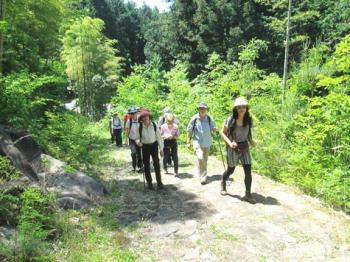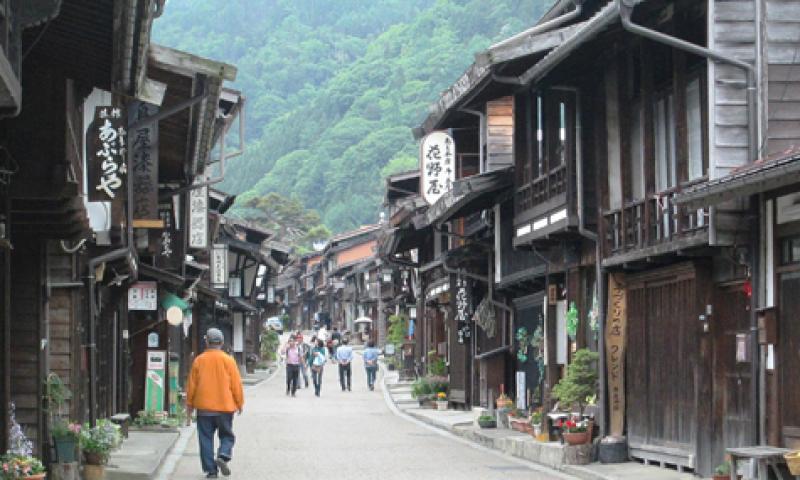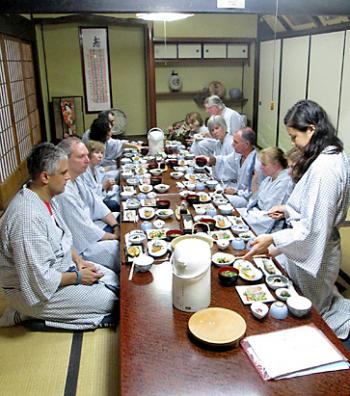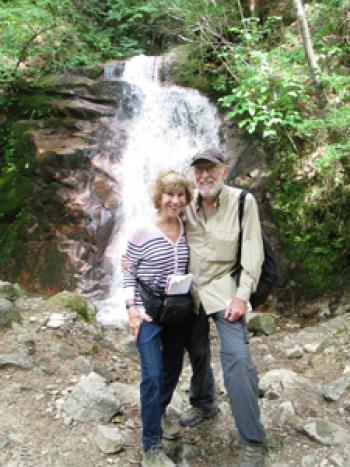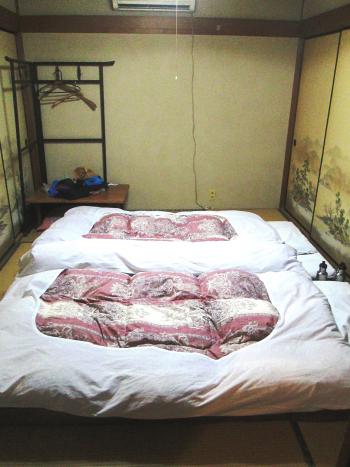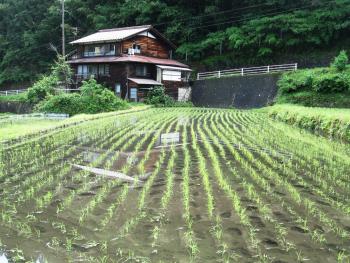Nakasendo Way with Walk Japan
This item appears on page 24 of the October 2016 issue.
During our first visit to Japan, in June 2016, my wife, Fyllis, and I marveled at the countless temples, shrines and other historic structures in Kyoto that have embellished the city since it was the country’s capital from the eighth to mid-19th centuries. And in Tokyo, we delighted in discovering gems from the height of its Edo period (15th to 19th centuries) hidden beneath the veneer of a bustling ultramodern city. But what provided an immersion into the history, heart and soul of the country was walking along a section of the Nakasendo Way, the ancient trail that connected Kyoto and Tokyo (formerly known as Edo).
Laid out in the eighth century, this 330-mile path was once trod by shoguns, daimyos, samurai and the underlings who comprised their entourages as they traveled between the two major cities. Their support staffs tended to the horses, prepared meals and performed countless other chores to provide the comforts to which those who occupied the upper levels of society were accustomed.
Our 5-day, 4-night trek, “The Nakasendo Way: The Kiso Road,” traversed the Kiso Road section of the historic route. We traveled with Walk Japan (Kitsuki-shi, O¯ita; www.walkjapan.com), and our daily 8- to 10-mile treks followed valleys past rushing waterfalls, wound through dense forests and crossed mountain passes. The occasional steep, sweat-inducing climb was made easier by switchbacks.
We began by following a short stretch of the original flat paving rocks that had been laid down hundreds of years ago. We continued past Shinto shrines, Buddhist temples and unadorned rock structures that represented or paid homage to emperors and other human deities and spiritual beings.
Here and there stood a lonely farmhouse, a centuries-old mill and a wooden waterwheel powered by a rushing stream cascading down a hillside. Houses in tiny farm villages were surrounded by rice paddies, and groves of bamboo reached toward the sky.
“Post towns” had been spaced a day’s travel apart to provide food and accommodations to the feudal lords and other members of the gentry who preceded us along the route centuries ago. The traditional wooden buildings in some of these historic villages have been lovingly restored.
Three of the best-preserved post towns — Magome-juku, Tsumago-juku and Narai-juku — are strung out along the Kiso Valley section of the route. In these places, the family-run guest houses where we stayed introduced us to customs and cultural touches of Japan both past and present.
It didn’t take long to learn the rules. Upon entering one of these modest structures, we each removed our shoes and replaced them with a pair of the slippers lined up on shelves near the entrance.
Be prepared to sleep on a fluffy futon laid out on the floor. Some bedding was filled with buckwheat husks, which we found surprisingly comfortable.
Don’t expect to order dinner from a menu, but among the numerous dishes laid before you, there are sure to be several that will be as pleasing to your taste buds as they are to the eye.
Traditional baths are often available at post town guest houses. You spritz yourself while seated on a stool, then soak in one of a series of hot pools in a tranquil outdoor setting… all the while wearing your birthday suit. Baths were segregated between men and women. If the bath staff did not speak English, our tour guide accompanied us.
During our 5-day Walk Japan walking tour, for which we paid ¥208,000 (near $2,015) per person, we used various kinds of public transportation, stayed at inns and dined at family-run restaurants, bringing our small group of travelers (a maximum of 12 on most itineraries) into repeated contact with locals in various walks of life.
Walk Japan provided an in-depth introduction to both Japanese history and contemporary life that was as enjoyable as it was informational.
VICTOR BLOCK

